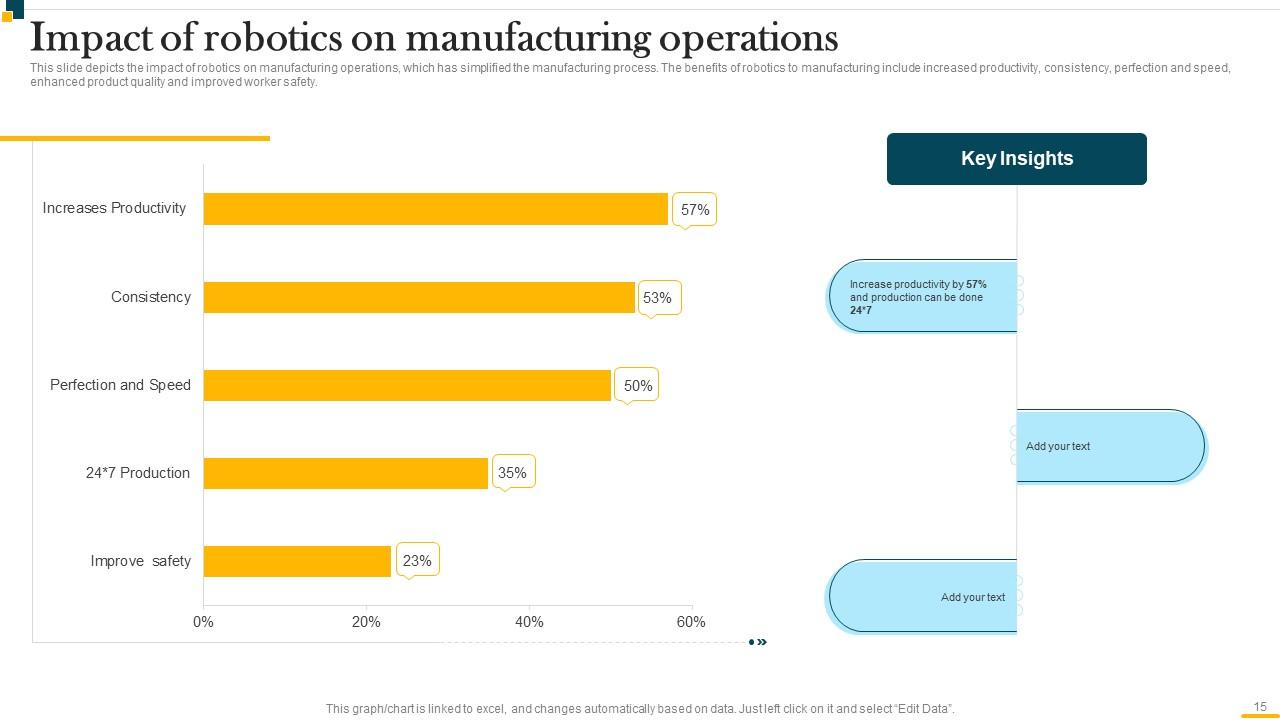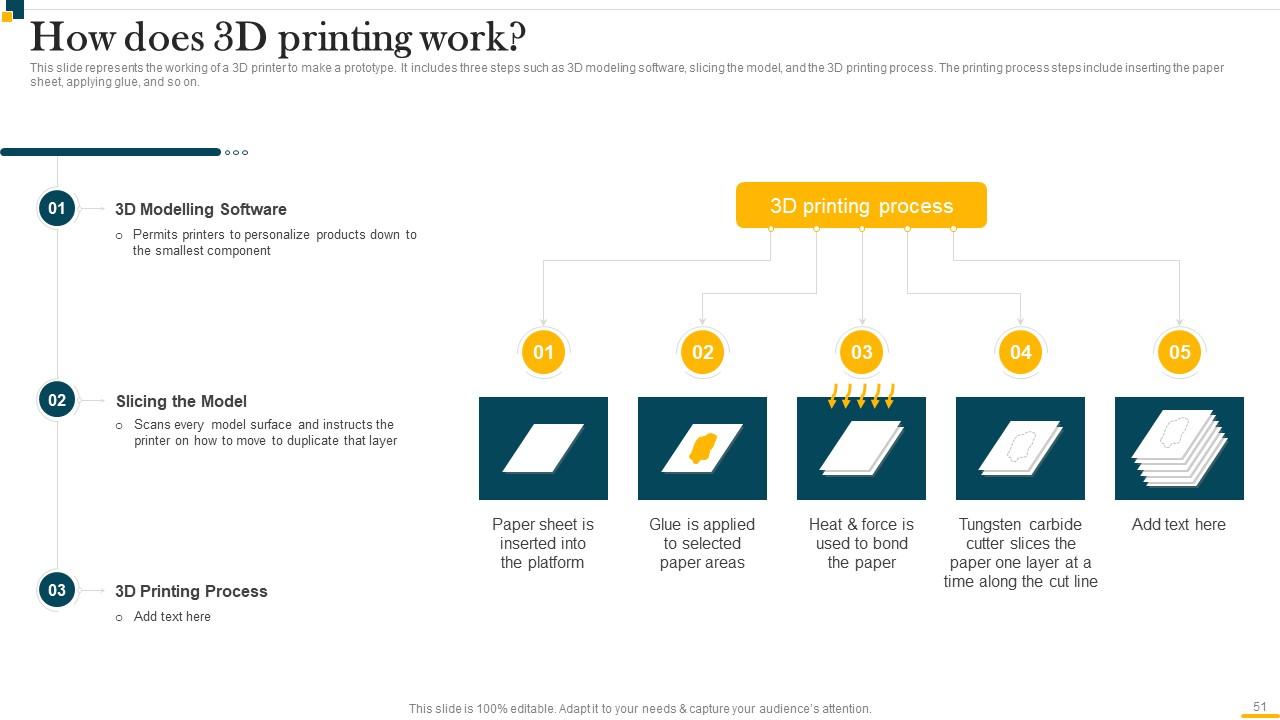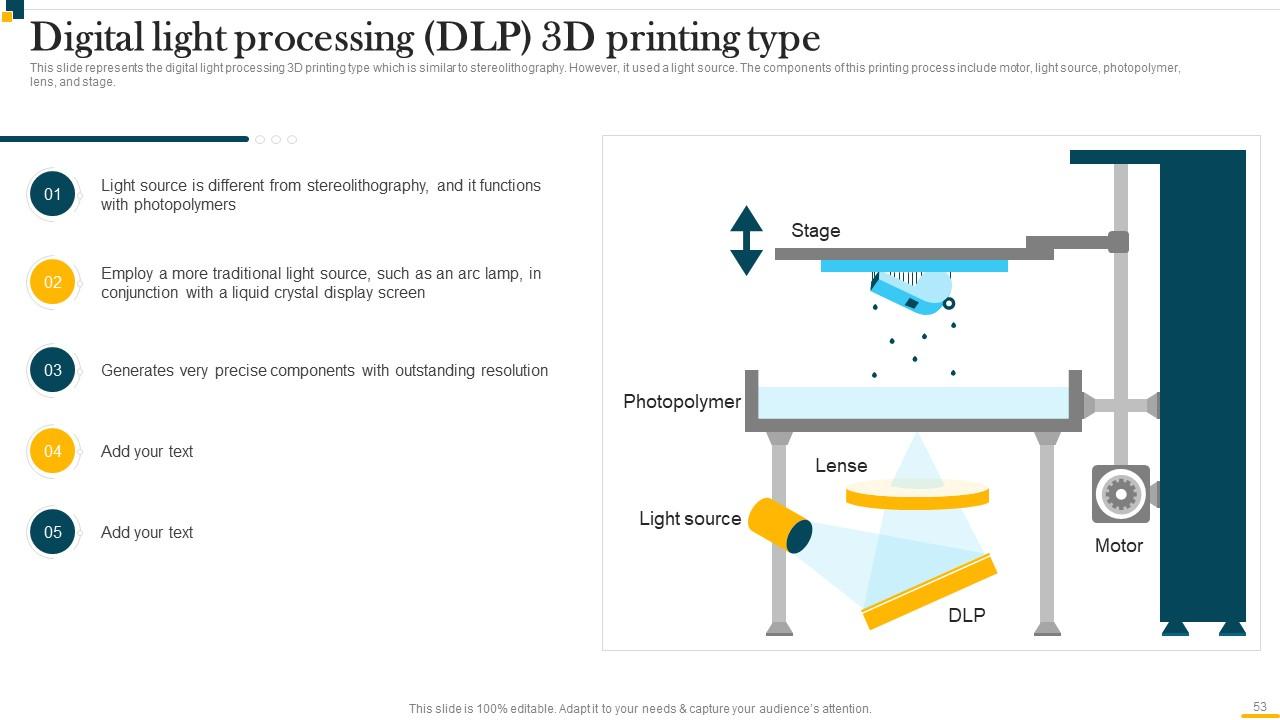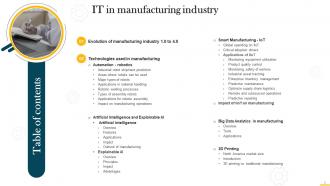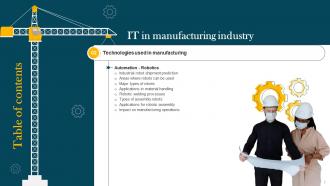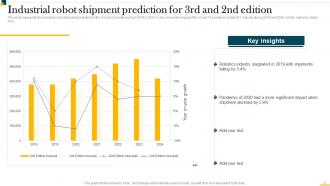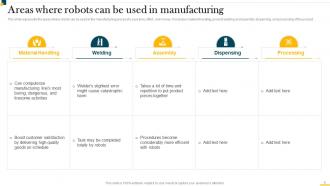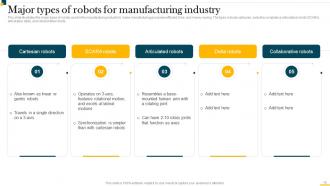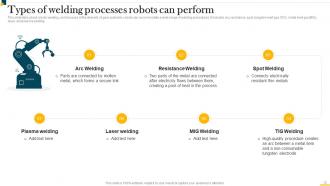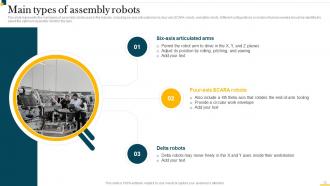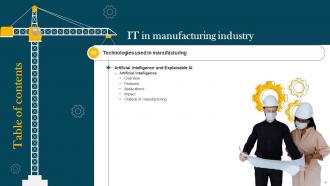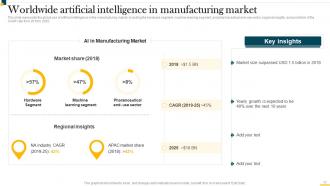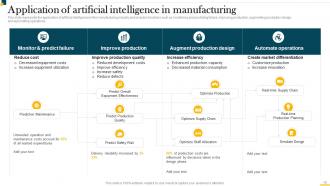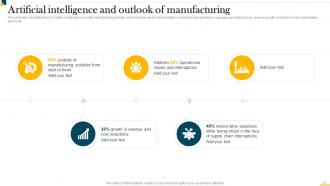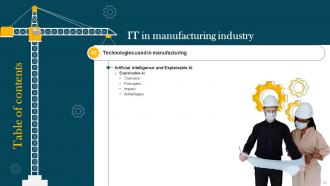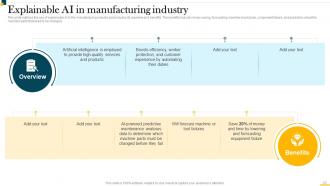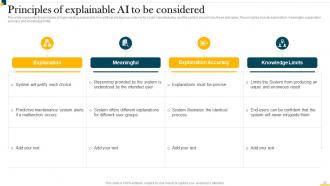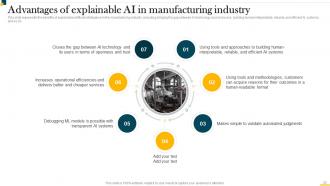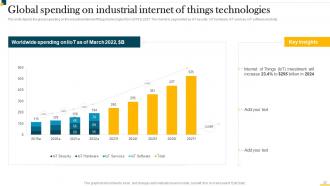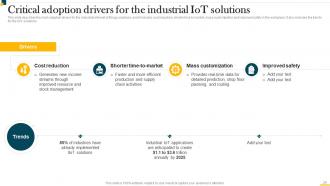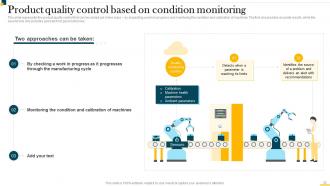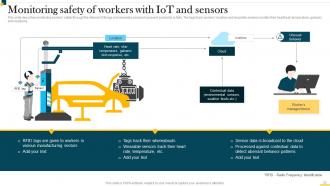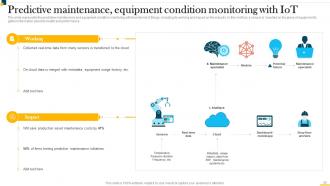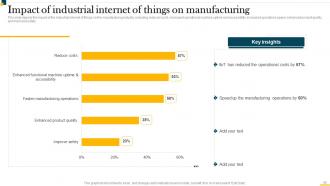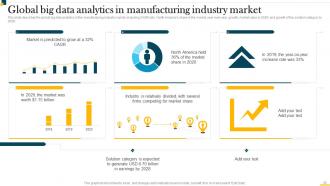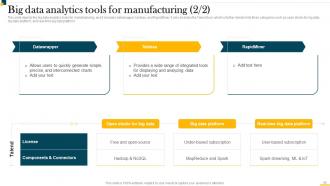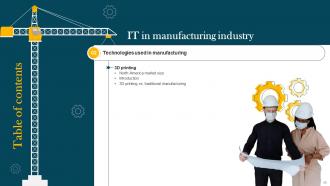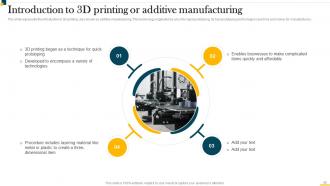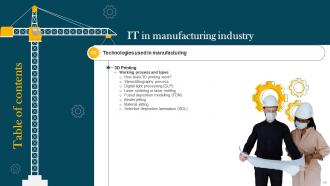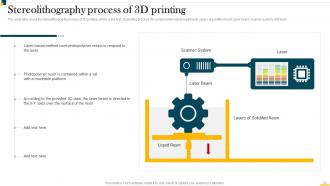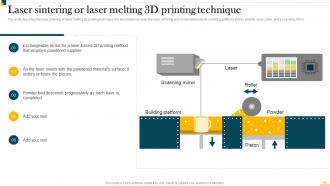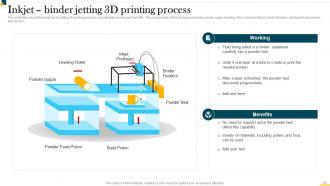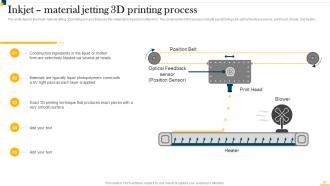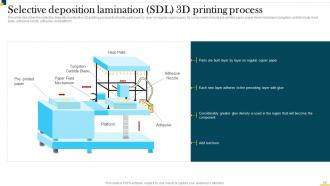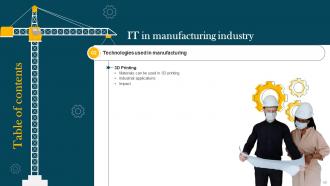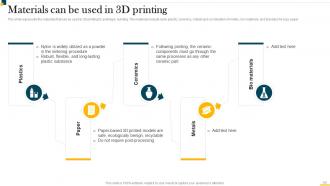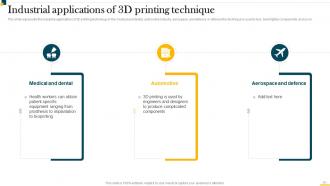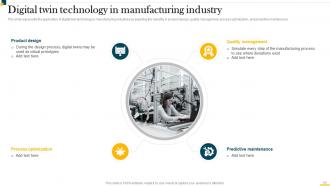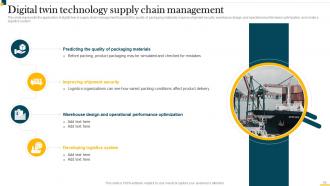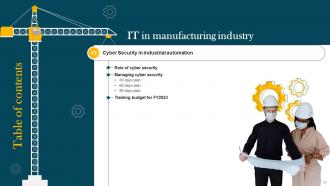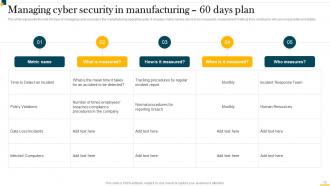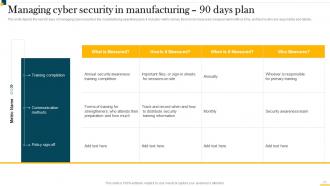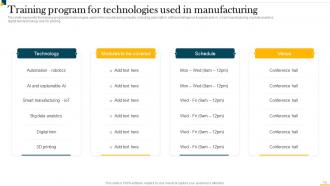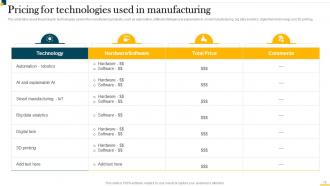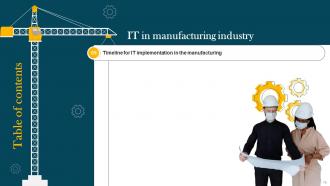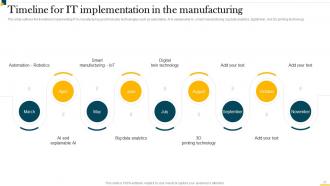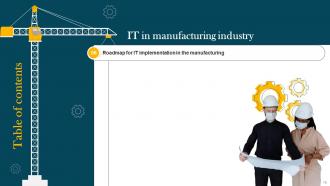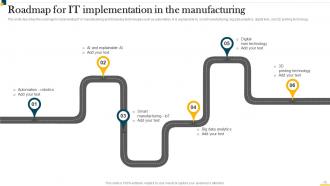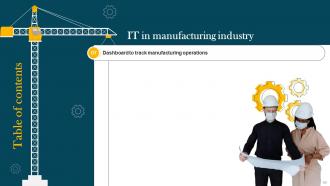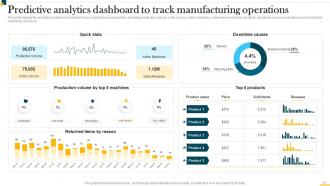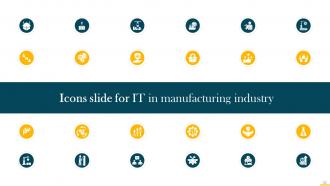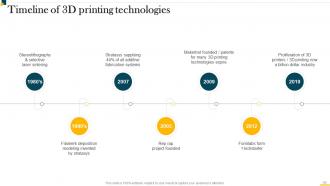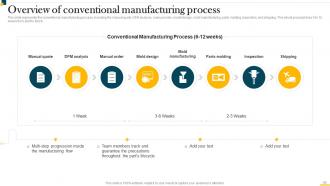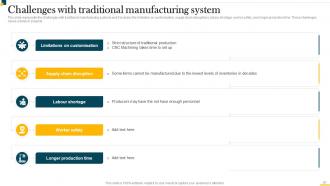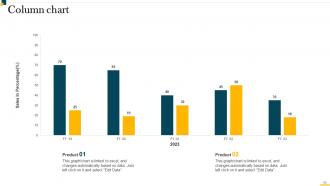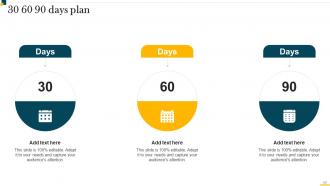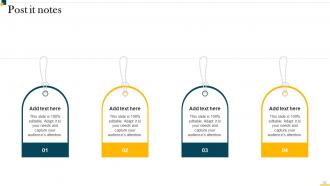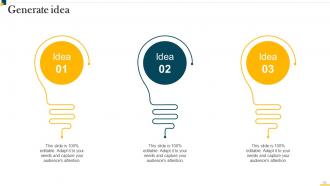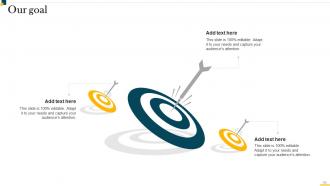IT In Manufacturing Industry V2 Powerpoint Presentation Slides
Check out our professionally designed IT in Manufacturing Industry PowerPoint Presentation. It provides a concise overview of the evolutionary journey of the manufacturing industry, spanning from 1.0 to 4.0. It delves into the array of technologies employed within the manufacturing sector to address production challenges. Within this presentation on IT in the manufacturing industry, we explore a spectrum of technologies utilized in manufacturing, encompassing Automation Robotics, Artificial Intelligence AI and Explainable AI, the Internet of Things IoT, Big Data Analytics, 3D Printing, and Digital Twin. Additionally, the Automation in Manufacturing PPT introduces each technology. It encompasses key aspects such as its features, market size, global spending, application areas, major types, impact, operational processes, and safety measures. It also delves into the pivotal role of cybersecurity in intelligent manufacturing, offering insights into a 30-60-90-day plan for managing cybersecurity. Moreover, this Smart Manufacturing template accommodates considerations for the training budget and pricing related to the technologies integral to intelligent manufacturing. It also provides a comprehensive timeline and roadmap for the strategic implementation of IT in the manufacturing industry. Lastly, it incorporates a predictive analytics dashboard to monitor and optimize manufacturing operations. Download our 100 percent editable and customizable PowerPoint, compatible with Google Slides, to streamline your presentation process.
You must be logged in to download this presentation.
 Impress your
Impress your audience
Editable
of Time
PowerPoint presentation slides
Deliver an informational PPT on various topics by using this IT In Manufacturing Industry V2 Powerpoint Presentation Slides. This deck focuses and implements best industry practices, thus providing a birds-eye view of the topic. Encompassed with ninety six slides, designed using high-quality visuals and graphics, this deck is a complete package to use and download. All the slides offered in this deck are subjective to innumerable alterations, thus making you a pro at delivering and educating. You can modify the color of the graphics, background, or anything else as per your needs and requirements. It suits every business vertical because of its adaptable layout.
People who downloaded this PowerPoint presentation also viewed the following :
Content of this Powerpoint Presentation
Slide 1: This slide introduces IT in Manufacturing Industry. State your company name and begin.
Slide 2: This is an Agenda slide. State your agendas here.
Slide 3: This slide shows Table of Content for the presentation.
Slide 4: This slide continues showing Table of Content for the presentation.
Slide 5: This slide shows title for topics that are to be covered next in the template.
Slide 6: This slide depicts the evolution of manufacturing from industry 1.0 to industry 4.0, including the technologies such as steam, hydropower etc.
Slide 7: This slide shows title for topics that are to be covered next in the template.
Slide 8: This slide represents the industrial robot shipment prediction for the 3rd and 2nd editions from 2018 to 2024.
Slide 9: This slide presents the areas where robots can be used in the manufacturing process to save time, effort, and money.
Slide 10: This slide illustrates the major types of robots used in the manufacturing industry to make manufacturing processes efficient, time, and money-saving.
Slide 11: This slide outlines the applications of robots in material handling chores, and it includes packaging products, transferring parts etc.
Slide 12: This slide talks about robotic welding, and because of the diversity of gear available, robots can accommodate a wide range of welding procedures.
Slide 13: This slide represents the main types of assembly robots used in the industry, including six-axis articulated arms, four-axis SCARA robots, and delta robots.
Slide 14: This slide describes the key applications of assembly robots used in the manufacturing industry. It includes part identification, bin picking, part sorting etc.
Slide 15: This slide depicts the impact of robotics on manufacturing operations, which has simplified the manufacturing process.
Slide 16: This slide shows title for topics that are to be covered next in the template.
Slide 17: This slide represents the global use of artificial intelligence in the manufacturing market, including the hardware segment, machine learning segment etc.
Slide 18: This slide depicts the features of artificial intelligence for the manufacturing industry, and it includes an increase in customer satisfaction etc.
Slide 19: This slide represents the application of artificial intelligence in the manufacturing industry and includes functions such as monitoring and predicting failure etc.
Slide 20: This slide depicts the impact of artificial intelligence on manufacturing operations, and it includes quick decision making, safety, greater efficiency etc.
Slide 21: This slide talks about the future of artificial intelligence and the manufacturing industry, and it includes end-to-end visibility in manufacturing operations etc.
Slide 22: This slide shows title for topics that are to be covered next in the template.
Slide 23: This slide outlines the use of explainable AI in the manufacturing industry and includes its overview and benefits.
Slide 24: This slide represents the principles of implementing explainable AI in artificial intelligence systems for smart manufacturing, and the system should obey these principles.
Slide 25: This slide describes how explainable artificial intelligence can transform manufacturing operations. It includes predictability, agility, resiliency etc.
Slide 26: This slide represents the benefits of explainable artificial intelligence in the manufacturing industry, including bridging the gap between AI technology and end users etc.
Slide 27: This slide shows title for topics that are to be covered next in the template.
Slide 28: This slide depicts the global spending on the industrial internet of things technologies from 2019 to 2027.
Slide 29: This slide describes the main adoption drivers for the industrial internet of things solutions, and it includes cost reduction, shorter time to market etc.
Slide 30: This slide shows title for topics that are to be covered next in the template.
Slide 31: This slide depicts the use of the internet of things in monitoring equipment utilization, and the process starts with collecting information from sensors etc.
Slide 32: This slide represents the product quality control that can be carried out in two ways – by inspecting a work in progress and monitoring the condition and calibration of machines.
Slide 33: This slide describes monitoring workers’ safety through the internet of things and wearable sensors to prevent accidents or falls.
Slide 34: This slide outlines the industrial asset tracking with the internet of things that works radio frequency identification tags and also caters to the working of the system.
Slide 35: This slide depicts the enterprise inventory management with the internet of things that works with RFID tags.
Slide 36: This slide represents the predictive maintenance and equipment condition monitoring with the internet of things, including its working and impact on the industry.
Slide 37: This slide talks about optimizing supply chain logistics and warehouse operations with the internet of things in the manufacturing industry.
Slide 38: This slide depicts the remote production control with the internet of things. This process includes client software, service engineer, remote desktop control etc.
Slide 39: This slide represents the benefits of implementing predictive repairing, including a decrease in repair downtime, reduction in machine failures and maintenance costs etc.
Slide 40: This slide depicts the impact of the industrial internet of things on the manufacturing industry, including reduced costs, increased operational machine uptime etc.
Slide 41: This slide shows title for topics that are to be covered next in the template.
Slide 42: This slide describes the global big data analytics in the manufacturing industry market, including CAGR rate, North America's share in the market etc.
Slide 43: This slide represents the big data analytics tools used in the manufacturing industry, including Apache Hadoop, KNIME, Xplenty, and Cloudera.
Slide 44: This slide depicts the big data analytics tools for manufacturing, and it includes datawrapper, tableau, and RapidMiner.
Slide 45: This slide represents big data analytics applications in the manufacturing industry, including production optimization, maintenance regulation etc.
Slide 46: This slide shows title for topics that are to be covered next in the template.
Slide 47: This slide depicts the north American 3D printing market size by technology such as stereolithography, fuse deposition modeling, selective laser sintering etc.10.2B
Slide 48: This slide represents the introduction to 3D printing, also known as additive manufacturing. This technology originated as a tool for rapid prototyping.
Slide 49: This slide talks about the comparison between 3D printing technology and traditional manufacturing based on cost, design, speed, and quality of the product.
Slide 50: This slide shows title for topics that are to be covered next in the template.
Slide 51: This slide represents the working of a 3D printer to make a prototype. It includes three steps such as 3D modeling software, slicing the model etc.
Slide 52: This slide talks about the stereolithography process of 3D printing, which is the first 3D printing process.
Slide 53: This slide represents the digital light processing 3D printing type which is similar to stereolithography. However, it used a light source.
Slide 54: This slide describes the laser sintering or laser melting 3D printing technique. It is also known as selective laser sintering and components include a building platform etc.
Slide 55: This slide outlines the fused deposition modeling 3D printing process, also known as extrusion and freeform fabrication.
Slide 56: This slide talks about the inkjet binder jetting 3D printing process, including its working and benefits.
Slide 57: This slide depicts the inkjet material jetting 3D printing process that uses the materials in liquid or molten form.
Slide 58: This slide describes the selective deposition lamination 3D printing process that builds parts layer by layer on regular copier paper.
Slide 59: This slide shows title for topics that are to be covered next in the template.
Slide 60: This slide represents the materials that can be used in 3D printing for prototype building.
Slide 61: This slide represents the industrial applications of 3D printing technology in the medical and dental, automotive industry, aerospace, and defence.
Slide 62: This slide describes the impact of 3D printing in the manufacturing industry, including complex geometries, lead time reduction, cost reduction etc.
Slide 63: This slide shows title for topics that are to be covered next in the template.
Slide 64: This slide represents the application of digital twin technology in manufacturing industries by depicting the benefits in product design, quality management etc.
Slide 65: This slide presents the application of digital twin in supply chain management to predict the quality of packaging materials, improve shipment security etc.
Slide 66: This slide depicts the impact of the digital twin on manufacturing operations that include innovation catalyst and cost reduction.
Slide 67: This slide shows title for topics that are to be covered next in the template.
Slide 68: This slide represents the role of cyber security in manufacturing automation and includes the significant cyber risks involved, such as unauthorized access etc.
Slide 69: This slide describes the first 30 days of managing cyber security in the manufacturing operations plan.
Slide 70: This slide represents the next 60 days of managing cyber security in the manufacturing operations plan.
Slide 71: This slide depicts the next 90 days of managing cyber security in the manufacturing operations plan.
Slide 72: This slide outlines the employee awareness training budget for the financial year 2023. The budget details include the training provider name etc.
Slide 73: This slide shows title for topics that are to be covered next in the template.
Slide 74: This slide represents the training program for technologies used in the manufacturing industry, including automation, artificial intelligence & explainable AI etc.
Slide 75: This slide talks about the pricing for technologies used in the manufacturing industry, such as automation, artificial intelligence & explainable AI etc.
Slide 76: This slide shows title for topics that are to be covered next in the template.
Slide 77: This slide outlines the timeline to implementing IT in manufacturing and it includes technologies such as automation, AI & explainable AI etc.
Slide 78: This slide shows title for topics that are to be covered next in the template.
Slide 79: This slide describes the roadmap to implementing IT in manufacturing and it includes technologies such as automation, AI & explainable AI, smart manufacturing etc.
Slide 80: This slide shows title for topics that are to be covered next in the template.
Slide 81: This slide depicts the predictive analytics dashboard to track manufacturing operations, including production volume, order volume etc.
Slide 82: This slide shows all the icons included in the presentation.
Slide 83: This slide is titled as Additional Slides for moving forward.
Slide 84: This slide describes the new business model for service business use case for the internet of things, including its impact on the product and service ratio of the company.
Slide 85: This is a Timeline slide. Show data related to time intervals here.
Slide 86: This slide represents the conventional manufacturing process, including the manual quote, DFM analysis, manual order, model design etc.
Slide 87: This slide presents the challenges with traditional manufacturing systems and it includes the limitation on customization, supply chain disruptions etc.
Slide 88: This slide displays Column Graph with two products comparison.
Slide 89: This slide provides 30 60 90 Days Plan with text boxes.
Slide 90: This slide showcases Magnifying Glass to highlight, minute details, information, specifications etc.
Slide 91: This slide depicts Venn diagram with text boxes.
Slide 92: This slide shows Post It Notes for reminders and deadlines. Post your important notes here.
Slide 93: This is an Idea Generation slide to state a new idea or highlight information, specifications etc.
Slide 94: This is Our Goal slide. State your firm's goals here.
Slide 95: This is a Comparison slide to state comparison between commodities, entities etc.
Slide 96: This is a Thank You slide with address, contact numbers and email address.
IT In Manufacturing Industry V2 Powerpoint Presentation Slides with all 105 slides:
Use our IT In Manufacturing Industry V2 Powerpoint Presentation Slides to effectively help you save your valuable time. They are readymade to fit into any presentation structure.
-
Excellent design and quick turnaround.
-
The design is very attractive, informative, and eye-catching, with bold colors that stand out against all the basic presentation templates.

















